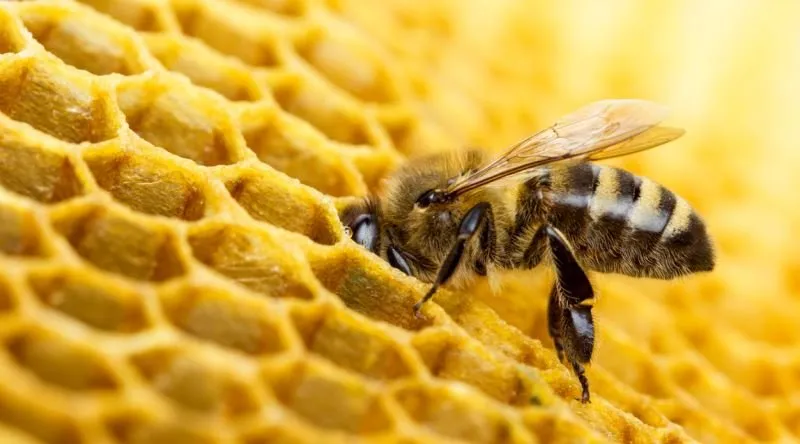This is a shapical reflection of millions of years of instinctive savings behavior of bees. It is the goal of gaining from the field for the purpose of hiding from the bears on the honey and or a variety of predators, the rival animal, because the less space the more honeycomb is, the more efficient storage of the nest, the breeding and so on. Be.
The shape of the honeycomb is that it is the condition of the corners of the surfaces where many bees are simultaneously glued to each other in a series of cylindrical soft walls that are stacked together, just like the soap foam, which is similar to the extreme Even in a fragile structure (see science) (see experiments), I do not think that the form of self-formed shape of Honeycomb is a very big event in terms of bees, humble.
So I don't see a special engineer bee in hives, or a designer bee department, so I say in the documentaries, in that respect...
If we are to express with a more technical narrative...
A) capacity is the largest
b) Minimum footprint
c) Making (hence the easiest coding to DNA)
D) The most robust
What is honeycomb shape?
Now if we could just.

First, we need to find out how many shapes are covering the plane by repeating itself. The measure of an inner angle in an n-edged polygon is found with the formula [(N-2) * 180]/n. The shape we want must unite to leave no gaps. Let's say the shape is X-edge.. We can write [(n-2) * 180 * x]/n = 360, considering how many of them would make the total internal angle of a corner of 360. Simplification, virt, armor...
(N-2) * x = 2n--> NX-2x-2n = 0--> NX-2x-2n + 4-4 = 0--> (n-2) (X-2) = 4.. We can only get positive integers as the number of edges.
n = 6 and x = 3 so it can be 3 properly hexagonal (see honeycomb)
n = 6 and x = 6 so there are 6 triangular triangles.
n = 4 and x = 4 can be 4 square.
This section will be more meaningful if the title of the Biare isoperimric problem is written..
The honeycomb of bees that we will encode should be used with minimal materials. Because of this necessity, honeycombs of bees must have a maximum honey field.
If the bee honeycomb was a square with the answer P:
(P/4) ^ 2 = i.e. 0,0625 * P ^ 2
As a result, the shape of a surface with the same environment and the most honey that can be covered by repeating itself is smooth hexagonal honeycomb. @banjo